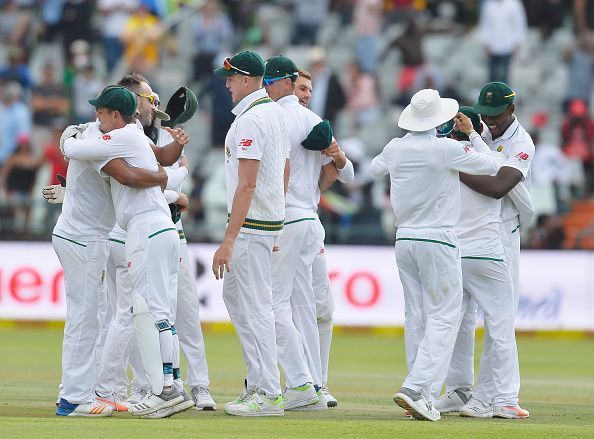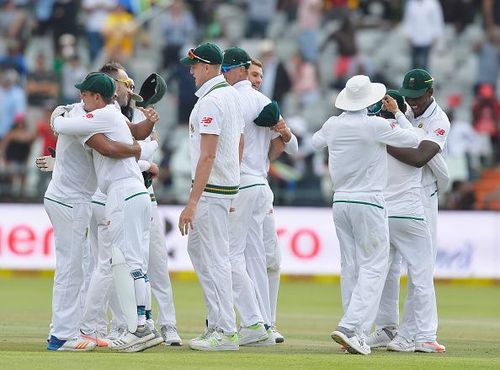
Analysing the differences between Cape Town 2018 and Mohali 2015

India and South Africa are two teams who organize their bilateral series in a fairly consistent pattern. So, if you pick up a 5-year slab in the cricket calendar, you will inevitably find that there have been two South Africa-India bilateral series, one in South Africa and the other one in India. There are very few teams in world cricket who follow such a regular pattern. So, it becomes fairly straightforward to compare the two series which fall in this 5-year slab, to track the progress of the two teams in home & away conditions.
The comparison becomes more interesting when you find that the 1st Test in the two most recent Test series panned out in almost an identical way. Yes, I am comparing the South Africa tour of India in 2015 and the India tour of South Africa in 2018. More precisely, I am comparing the 1st Test of the 2015 Test series at Mohali and the 1st Test of the 2018 series at Cape Town. Let's spot a few obvious similarities, to begin with:
Both Test matches were the first of the series.
Both Test matches resulted in victory for the home team.
Now, before I delve deeper, take a look at the scorecards of both the Test matches. There is an uncanny resemblance:
Cape Town 2018
S.A. -1st Innings- 286/10 (73.1 Overs)
India – 1st Innings- 209/10 (73.4 Overs)
S.A.– 2nd Innings- 130/10 (41.2 Overs)
India – 2nd Innings- 135/10 (42.4 Overs)
South Africa won by 72 runs
Mohali 2015
India-1st Innings- 201/10 (68 Overs)
S.A. -1st Innings- 184/10 (68 Overs)
India- 2nd Innings – 200/10 (75.3 Overs)
S.A.-2nd Innings- 109/10 (39.5 Overs)
India won by 108 runs
Both the Test matches got over in a little less than three playing days. The margin of victory for the victorious teams in both the cases was around 100 runs. In the 4th innings of the match, the losing team was forced to chase a target of little over 200 runs in both the Test matches & in each case, they folded for a little over 100. All these similarities only illustrate that both the Test matches panned out in more or less the same manner. However, in spite of the number of explicit & implicit similarities between the two Test matches, there is a very prominent line of difference between them i.e. the opinion of cricket experts, players, commentators, ex-players and the media, about both the pitches.
In Mohali, the pitch was deemed under-prepared. The ball spun square and did not offer an even contest between bat & ball. There were talks about rating the pitch quality poor, with the opinion that the Indians had over exaggerated their home advantage and prepared a wicket that was against the spirit of the game. There were meek protests from the Indian players, but that was nothing in front of the outburst from the cricketing world.
In Cape Town, however, the entire group had a different opinion about things. They were delighted by the standard of the pitch, the even contest between bat & ball between the two teams. The home team and the pitch curator was generously appreciated for preparing a pitch that reinstilled the excitement of the audience in Test cricket during the rapid globalization of T20 leagues.
Largely, both the Test matches went the same way, produced the same moments and were equally competitive. Then, why does there exist such a major difference of opinion? Is it the thing that we, as Indians or rather Asians, always resort to? For readers who are not privy to this logic, let me illustrate. Asian cricket experts believe that the English, South African and Australian media have demeaned the art of playing spin on spinner friendly tracks because they themselves are not experts in that art. Is that actually the reason that when a ball turned square on the Mohali pitch, cricket experts termed it underprepared, whereas when the ball seamed & swung on a 4th-day wicket, the experts said that it was inspiring Test cricket?
Sometimes, when you look at the detailed scorecard of a match, you notice a few intricacies. This is the case with the Test match in Mohali. Look at the Indian bowling card. You will see something very familiar. Ashwin picked up a fifer in the 1st innings and finally in the 4th innings, when the pitch deteriorated, Jadeja picked up a fifer too. Ashwin and Jadeja are the leaders of the bowling attack on home soil for India, so everything followed the recipe. But, now take a look at the South African bowling card. In the 1st innings, Dean Elgar was the one who picked up a four-fer. In the 2nd innings, it was Simon Harmer who picked up a four-fer.
Now, let's just take a look at the background of these two bowlers, Elgar and Harmer. For all the wonderful batting skills that Elgar possesses, he has got 13 wickets in his Test career of 43 Test matches, out of which four came in the match at Mohali. Harmer himself has played only five Test matches for the country, picking up 20 wickets. It's clear that both these bowlers who picked up 8 of the 20 wickets in the Indian innings in that Test match are below average spinners.
This is where the Mohali pitch of 2015 failed Test cricket. If in a Test match, you have below-average bowlers picking up wickets, just because the pitch made them unplayable, then it's not a suitable pitch for Test match cricket. Test matches have always been a test of sheer talent, hard work, work ethic and patience. If players are successful at Test-match level without any of the above-mentioned attributes, only due to certain playing conditions, then the playing conditions are definitely unfit for Test match cricket. Thus, Mohali got the criticism it deserved.
Now, let's have a look at the more recent Test match in discussion, the Cape Town Test in 2018. Just have a look at the bowlers who picked up wickets in this Test match. Let's start with the Man of the Match himself, Vernon Philander. Philander demolished the Indian batting with a six-fer in the 2nd innings. Was it because his hard work was discounted by the pitch & conditions? Not at all. It was because his hard work, dedication and sense of discipline were enhanced by the effect of the pitch.
This was the case with Bhuvneshwar Kumar, who picked up a four-fer in the 1st innings. Unlike Mohali, if you are an ordinary medium fast bowler here, you won't seem unplayable. You have to run in hard, bend your back, pitch the ball in the good length area and keep the ball around the 4th stump line consistently, for an entire session. If as a pace bowler, you are disciplined, then you will be rewarded by the conditions and the pitch, in the form of wickets.
In the 1st South African innings, Jasprit Bumrah did not fare well, in spite of the pitch assisting pace bowlers. This is because he erred in length. That is why Cape Town is different from Mohali, because here even if you are a pacer, you will get punished if you are not accurate.
It's clear why cricket experts termed Mohali a poor Test match wicket but were singing the praises of the Cape Town pitch.